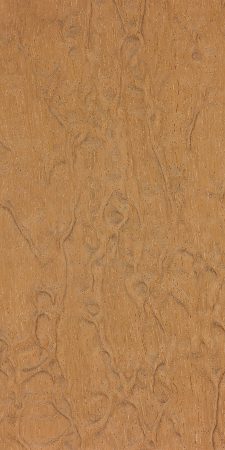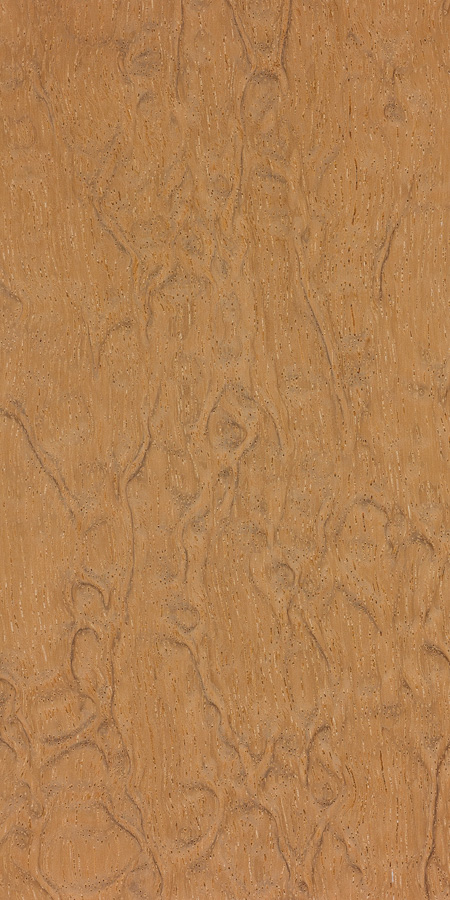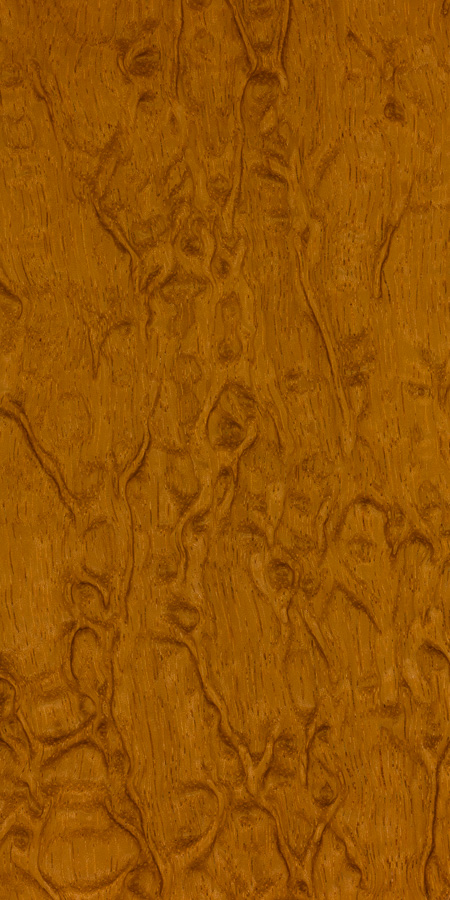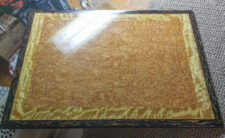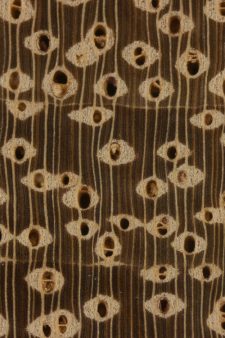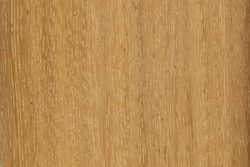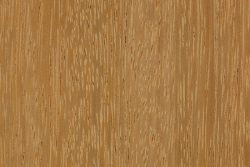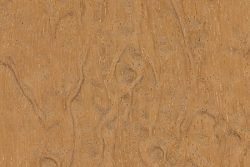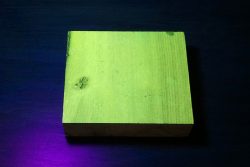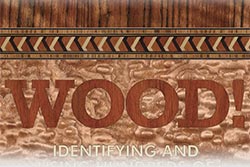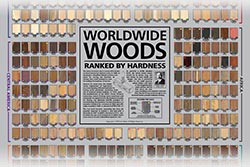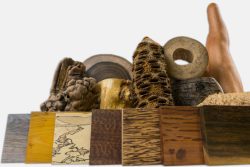Common Name(s): Afzelia xylay, afzelia, xylay lace
Scientific Name: Afzelia xylocarpa (and A. rhomboidea)
Distribution: Southeast Asia
Tree Size: 100-130 ft (30-40 m) tall,
2-4 ft (.6-1.2 m) trunk diameter
Average Dried Weight: 51.5 lbs/ft3 (825 kg/m3)
Specific Gravity (Basic, 12% MC): .70, .83
Janka Hardness: 1,980 lbf (8,820 N)
Modulus of Rupture: 17,210 lbf/in2 (118.7 MPa)
Elastic Modulus: 1,939,000 lbf/in2 (13.37 GPa)
Crushing Strength: 9,960 lbf/in2 (68.7 MPa)
Shrinkage: No data available; reported to have good stability. Values most likely similar to African species of Afzelia.
Color/Appearance: Heartwood is a reddish brown. Well defined sapwood is a pale yellowish white. Color tends to darken with age. Pieces containing pommele or blistered figure are sometimes exported and sold under the name Afzelia xylay, which is a shortened version of the botanical name of a particular Asian species, Afzelia xylocarpa. Burls are also commonly offered for sale, and usually have an abundance of small tight knots. In some markets, burls represent the majority of afzelia wood for sale.
Grain/Texture: Grain is interlocked with a uniform medium to coarse texture; naturally lustrous.
Rot Resistance: Rated as very durable. Moderately resistant to termites and marine borers, and variously resistant/susceptible to other insect attacks.
Workability: Generally considered somewhat difficult to work on account of its interlocked grain, causing tearout during machining operations. The wood also has a pronounced dulling effect on cutters.
Odor: No characteristic odor.
Allergies/Toxicity: Although all of the reports describe African species of Afzelia, it is strongly presumed that Asian species would also produce similar reactions, which include skin, eye, and respiratory irritation, as well as sneezing. See the articles Wood Allergies and Toxicity and Wood Dust Safety for more information.
Pricing/Availability: Most commercial species of Afzelia originate from Africa, but sometimes figured pieces of Asian species of Afzelia are also sold. Prices are high for an imported hardwood, and are generally based on the level of figuring present in the wood.
Sustainability: This wood species is not listed in the CITES Appendices, but a number of Asian species in the Afzelia genus are on the IUCN Red List. The most notable species, Afzelia xylocarpa, is listed as endangered due to a population reduction of over 50% in the past three generations, caused by a decline in its natural range, and exploitation. (Another Asian species, A. rhomboidea, is also red-listed by the IUCN as vulnerable.)
Common Uses: Furniture, cabinetry, veneer, flooring, docks, boatbuilding, exterior millwork and construction, turned objects, inlays, and other small specialty wood items.
Comments: As a commercial timber, afzelia is more frequently exported from Africa, where it’s commonly called doussie (this alternate name almost exclusively refers to African species, while the name afzelia serves as both common and scientific names, and is more inclusive). Some highly figured pieces of afzelia from Asia are also seen on the international market, usually bearing the name afzelia xylay or xylay lace. Most afzelia burls are also of Asian origin. Although very closely related to the African species, Asian Afzelia are geographically (and with regard to the figured pieces, visually) distinct.
Images: Drag the slider up/down to toggle between raw and finished wood.
Identification: See the article on Hardwood Anatomy for definitions of endgrain features. (The endgrain images below were taken from a closely related African Afzelia species.)
Porosity: diffuse porous
Arrangement: solitary and radial multiples
Vessels: large, few to very few
Parenchyma: vasicentric, lozenge, winged, confluent, and marginal
Rays: narrow, normal spacing
Lookalikes/Substitutes: Very similar to Afzelia species from Africa. See notes below regarding fluorescence.
Not to be confused with pyinkado (Xylia xylocarpa), another Asian hardwood that has a similar appearance and scientific name—but is unrelated. Pyinkado is significantly heavier than Afzelia species and is sometimes referred to regionally as ironwood.
Notes: Heartwood in Asian species appears to be more consistently and strongly fluorescent than species from Africa (which tend to have a more varied fluorescent response).
Related Content:

